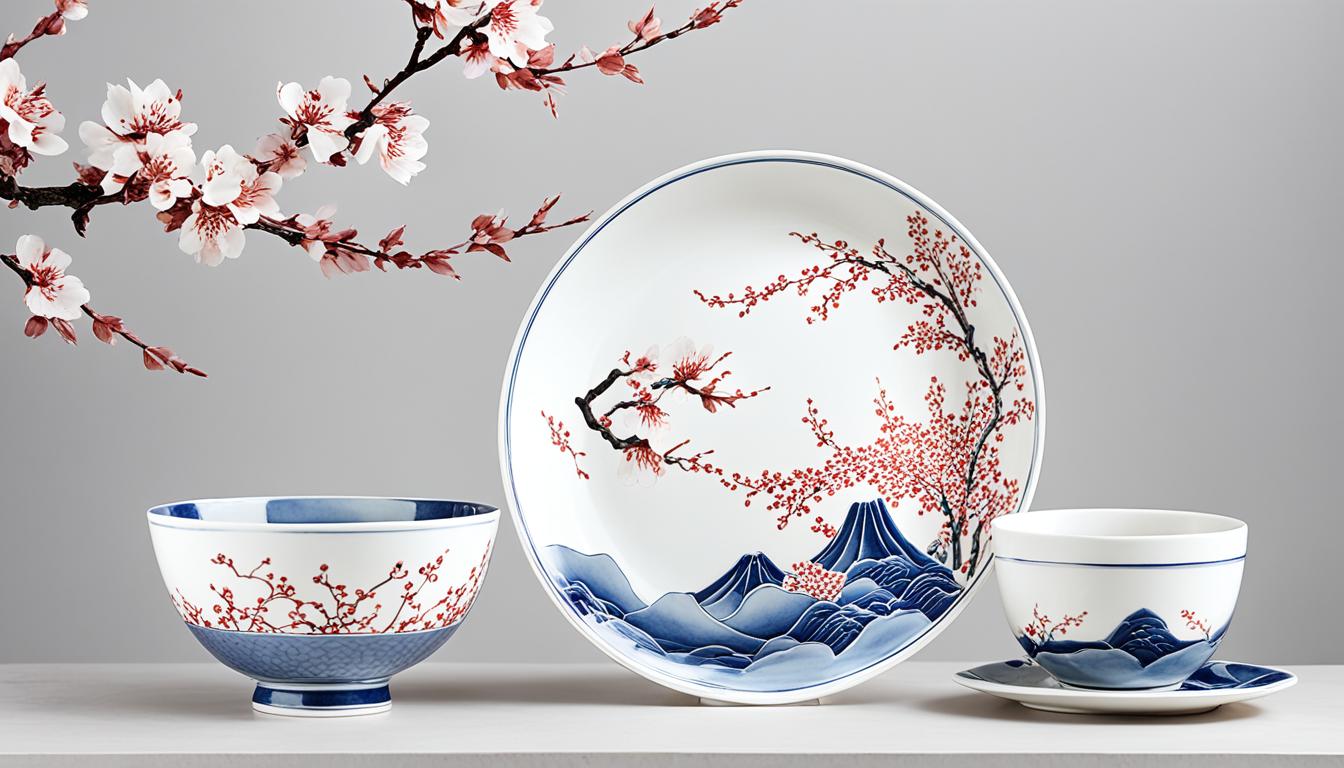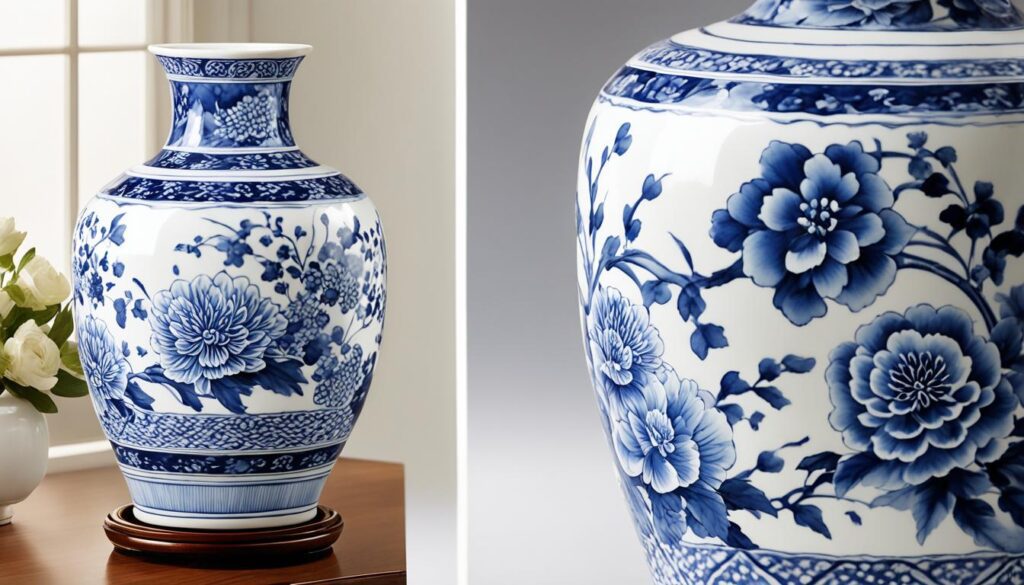
Porcelain in Japanese craftsmanship is a reflection of exquisite artistry that combines tradition and elegance. Japanese porcelain, also known as Japanese ceramic, holds a special place in the world of craftsmanship. Renowned for its unparalleled quality and timeless designs, Japanese porcelain has captivated art enthusiasts and collectors alike.
In Japan, the production of porcelain has a long and storied history, dating back to ancient times. The skill and precision involved in creating each piece of porcelain make it a cherished art form. From traditional techniques passed down through generations to modern adaptations, Japanese artisans have perfected the craft, making Japanese porcelain sought after worldwide.
Each piece of Japanese porcelain embodies the meticulous attention to detail and the deep-rooted cultural significance of Japanese craftsmanship. The beauty of Japanese design is often characterized by its simplicity, elegance, and natural imperfections, exemplifying the aesthetic concept of “wabi-sabi.”
Whether used as tableware, decorative items, or collectors’ pieces, Japanese porcelain adds a touch of sophistication and refinement to any space. Its versatility and timeless appeal make it a cherished addition to homes and collections around the globe.
If you want to delve deeper into the world of Japanese porcelain, this article will guide you through the history, types, care, and where to find these exquisite creations. Immerse yourself in the artistry and discover the beauty of Japanese porcelain firsthand.
The History of Japanese Porcelain
Japanese porcelain has a rich history that dates back to the Neolithic period. The production of pottery and porcelain in Japan began as early as the Jomon period, making it one of the oldest ceramic traditions in the world. The craftsmanship of Japanese ceramics has been influenced by neighboring East Asian civilizations, particularly China and Korea. Japanese ceramists drew inspiration from their counterparts, adapting and transforming Chinese and Korean prototypes into distinctively Japanese creations.
The 17th century marked the industrialization of porcelain production in Japan, with high-quality wares becoming popular exports to Europe. In more recent times, a cottage ceramics industry emerged, giving rise to notable companies like Noritake and Toto Ltd. Japanese pottery is characterized by two aesthetic traditions: the simple and rustic style influenced by Zen Buddhism and the highly finished and brightly colored factory wares that developed in a distinctively Japanese way.
| Period | Significance |
|---|---|
| Neolithic period | Earliest production of Japanese pottery and porcelain |
| Jomon period | Development of ceramic traditions |
| 17th century | Industrialization of porcelain production; exports to Europe |
| Modern times | Emergence of cottage ceramics industry; establishment of notable companies like Noritake and Toto Ltd |
Types of Japanese Porcelain
Japanese porcelain encompasses various types of ware, each with its unique characteristics. Traditional Japanese porcelain includes styles like Shigaraki, Tamba, Bizen, Tokoname, Echizen, and Seto. These wares were popular for their simplicity and functionality. Fine porcelain from Japan gained popularity during the industrialization period and is known for its high-quality standard production. Porcelain ware from Japan includes a wide range of tableware and decorative items, crafted with meticulous attention to detail. The selection of porcelain products showcases the diversity of Japanese design, ranging from minimalist and natural aesthetics to sleek and modern designs. Porcelain from Japan is highly valued for its craftsmanship and beauty, making it a sought-after addition to any collection.
Types of Japanese Porcelain
| Porcelain | Main Characteristics |
|---|---|
| Shigaraki | Earthy tones, rustic texture |
| Tamba | Deep reddish-brown glaze, wood-fired |
| Bizen | Uniquely textured, kiln-dried finish, no glaze |
| Tokoname | Reddish-brown color, smooth and simple designs |
| Echizen | Hand-painted designs, vibrant colors |
| Seto | Varied styles, from traditional to modern |

Japanese porcelain showcases a rich variety of styles, from the earthy tones of Shigaraki to the vibrant hand-painted designs of Echizen. The table above provides a glimpse into the main characteristics of traditional Japanese porcelain wares. Each type of porcelain has its own unique charm and cultural significance, reflecting the diversity of Japanese craftsmanship. Whether you prefer the rustic simplicity of Tamba or the sleek modernity of Seto, Japanese porcelain offers a timeless elegance that captivates collectors and enthusiasts around the world.
Care and Maintenance of Japanese Porcelain
Caring for Japanese porcelain ensures its longevity and continued beauty. While Hasami Porcelain products are microwave and dishwasher-safe, it is important to note that they are not designed to withstand oven or open flame temperatures. To preserve the pristine condition of porcelain, it is recommended to avoid frequent or hard impacts that may cause chipping.
Over time, natural changes and patina may occur, especially with black glaze porcelain. To mitigate stains or patina, a mixture of baking soda and vinegar can be applied to the affected area, covering it with a paper towel for about an hour before washing it off with hot water and mild dish soap. Deeper stains may require repeating the process. Following these care tips will help maintain the beauty and quality of Japanese porcelain.
If you want to keep your Japanese porcelain in top condition, it’s important to follow these care tips. By doing so, you can ensure that your porcelain pieces remain beautiful and pristine for years to come.
Where to Find Japanese Porcelain
If you’re looking to buy Japanese porcelain, you have a variety of options, both online and offline. One reputable source is KANSO, where you can find a wide selection of Hasami Porcelain products. They offer a hassle-free ordering service, even for items that may not be currently available in their store. Delivery times vary depending on your location, with orders within the US typically taking 2-3 business days, and international orders potentially taking up to 2 weeks.
Other retailers specializing in traditional crafts or general home decor may also carry Japanese porcelain products. Exploring local stores or online marketplaces can lead you to discover unique and beautiful pieces of Japanese porcelain. Antique shops and auctions are another avenue to explore for collectors and enthusiasts seeking rare and one-of-a-kind items.
With the convenience of online shopping, purchasing Japanese porcelain has never been easier. It’s now possible to find and buy Japanese porcelain from the comfort of your own home, bringing the timeless beauty of Japanese craftsmanship into your living space.
